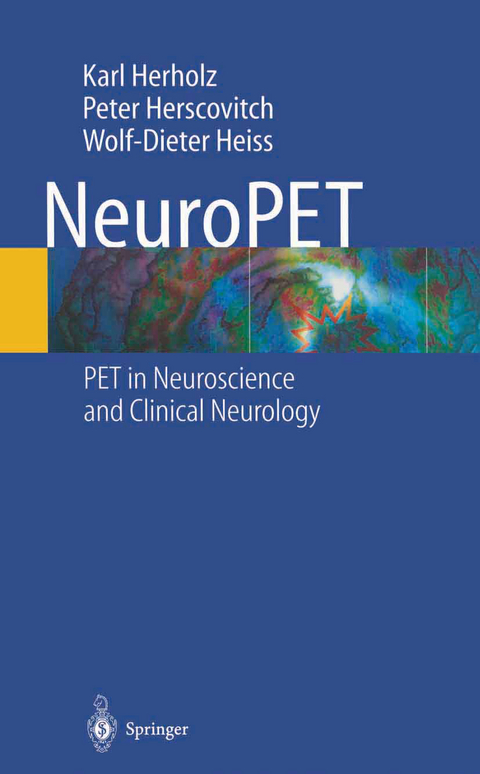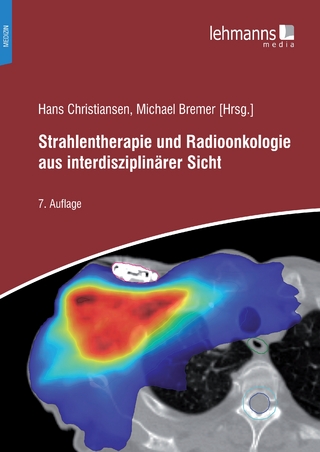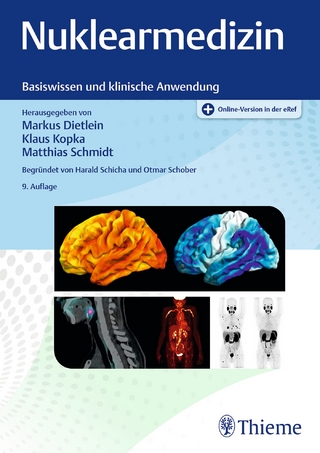
NeuroPET
Springer Berlin (Verlag)
978-3-642-62283-0 (ISBN)
1 Introduction.- 2 Clinical Studies.- 2.1 Dementia and Memory Disorders.- 2.2 Movement Disorders.- 2.3 Brain Tumors.- 2.4 Cerebrovascular Disease.- 2.5 Epilepsy.- 2.6 Other Neurological Disorders.- 2.7 Psychiatric Disorders.- 3 Imaging Brain Function.- 3.1 Blood-Brain Barrier Transfer.- 3.2 Cerebral Blood Flow.- 3.3 Oxygen Consumption.- 3.4 Glucose Consumption.- 3.5 Influence of Brain Function on CBF and Metabolism.- 3.6 Tissue Oxygen Pressureand pH.- 3.7 Amino Acid Transport and Protein Synthesis.- 3.8 Nucleosides and DNA Synthesis.- 3.9 Molecular Imaging.- 3.10 Dopamine System.- 3.11 Cholinergic System.- 3.12 Serotonin System.- 3.13 Gamma-aminobutyric acid (GABA).- 3.14 Glutamate and NMDA Receptors.- 3.15 Adenosine Receptors.- 3.16 Histamine Receptors.- 3.17 Cannabinoid Receptors.- 3.18 Opioid Receptors and Sigma Receptor.- 3.19 Steroid Receptors.- 3.20 Substance P.- 3.21 Secondary Neurotransmitters.- 4 Data Acquisition, Reconstruction, Modeling, Statistics.- 4.1 Positron Emitters and Tracers.- 4.2 Scanners and Detector Systems.- 4.3 Data Acquisition.- 4.4 Image Reconstruction.- 4.5 Motion Detection and Correction.- 4.6 Data Visualization.- 4.7 Image Coregistration.- 4.8 Anatomical Standardization.- 4.9 Physiological Modeling.- 4.10 Quantitative Data Analysis.- References.
From the reviews:
This is the most comprehensive book written to date which reviews applications of PET in brain disorders, measurements of regional brain function, molecular imaging and PET methodology.
Rarer states are reviewed as well as those not normally considered as presenting with functional brain lesions such as pain and migraine.
For those with clinical PET facilities, this book will indentify how this technology could be exploited for the care of brain disorder patients.
RAD Magazine, December, 2005
"This book is by world authorities in both the methodology of positron emission tomography (PET) and its applications in clinical neurology. According to the authors, it is intended to 'guide both nuclear medicine specialists and also neurologists and psychiatrists in the use of PET'; I assume they also meant to include neurosurgeons, neurophysiologists and clinical neuroscientists. ... This book is unique in its kind. ... it will prove an invaluable source of historical information about one of the major revolutions in understanding brain diseases." (J. -C. Baron, Acta Neurochirurgica, Vol. 147, 2005)
| Erscheint lt. Verlag | 20.11.2013 |
|---|---|
| Zusatzinfo | XV, 297 p. |
| Verlagsort | Berlin |
| Sprache | englisch |
| Maße | 155 x 235 mm |
| Gewicht | 501 g |
| Themenwelt | Medizinische Fachgebiete ► Radiologie / Bildgebende Verfahren ► Nuklearmedizin |
| Schlagworte | adenosine • Alzheimer • cerebrovascular disease • dementia • Diagnosis • Neurology • Neuroradiology • Neuroscience • neurosurgery • Nuclear Medicine • Physiology • Positron Emission Tomography • Psychiatric Disorder • Psychiatry • Tumor |
| ISBN-10 | 3-642-62283-6 / 3642622836 |
| ISBN-13 | 978-3-642-62283-0 / 9783642622830 |
| Zustand | Neuware |
| Haben Sie eine Frage zum Produkt? |
aus dem Bereich


